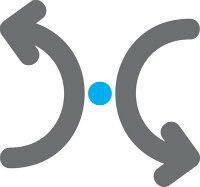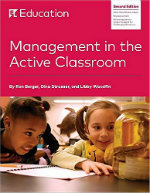Make a Fresh Start after Winter Break
Former teacher Libby Woodfin served as director of publications for EL Education and co-authored (with Ron Berger) Leaders of Their Own Learning and other books. Here she uses text & video tips to help teachers use the return to school as an opportunity to refresh and improve classroom culture.
By Libby Woodfin
By the time the winter holiday comes around students and teachers alike are usually more than ready for a break from school. It is an important time for rejuvenation. When students leave school for an extended period, however, their relationships with teachers and friends and their habits and routines are disrupted.
When they return to school in the New Year, it’s not always an easy reentry. Things they had pretty well figured out by December may suddenly prove difficult or unfamiliar come January.
The first days back to school after this long break are important for setting the tone for the remainder of the year, and teachers can take a few important steps to making the transition a smooth and positive one, and even an opportunity for improvement.
If there were aspects of the physical classroom arrangement or the classroom culture that weren’t quite right in the fall, this mid-year break provides a unique opportunity for a fresh start.
Welcome students back with enthusiasm.
Honor and acknowledge the fact that students have just been away from you and the classroom for more than a week. Make a big deal of their return, welcome them back, and make every effort to remind them that your classroom is a safe and supportive environment. Consider a celebratory gesture such as cups of sparkling cider and a New Year’s toast.
Pay individual attention to those students whom you suspect may not have had the easiest time at home during the break. Invite them to have lunch with you or make a special effort to tell them that you’re happy to see them. Be sure to avoid the kinds of “what I did over vacation” sharing activities that highlight the disparities in students’ experiences.
Encourage students to look back and move forward.

Spend a few minutes now to save a lot of time later.
It’s tempting to try to return to the routine as quickly as possible, but students – especially middle school students – need some time to reengage with you and their friends, and to be reminded of the expectations in your classroom. They may need reminders of how to manage transitions, how to monitor their volume in the classroom, or how to work productively in groups.
Spending five minutes with some playful role-playing of what quiet reading time should look like, for example, can prevent you from having to give a lot of individual reminders. Paradoxical role-playing (e.g., “Raul, can you show us how you think I don’t want you to behave during quiet reading?”), followed by its positive counter-part (e.g., “Now be your real self and show us how it’s really done”) can be fun for students and honors for them that we all need reminding from time to time.
In the video below see how clear expectations for volume and movement in the classroom empower students to be self-disciplined:
Take stock and make needed changes.
Sometimes the holiday break leads teachers to reflect on the things that haven’t worked well during the school year so far. If you need to physically rearrange parts of the classroom or improve the way things are stored, labeled, or displayed, now is a perfect time.
If you didn’t take the time to establish classroom norms with your students in the fall, now is the chance to do that important work. It’s never too late. Be transparent with your students (i.e., “We should have done this the first week of school, but it’s never too late. We’re going to do it now. It’s a New Year!”).
Ensure ownership of classroom norms by building them together with students and focusing on the positive qualities you all want to see in the classroom community (e.g., “Show respect by listening when others talk” versus “no talking over each other”).
See students and teachers building norms together in the following video:
Revise or recommit to existing classroom norms and routines.
Your classroom norms may live on an anchor chart on the wall, but are they really doing their job of helping maintain a positive classroom culture? Your routines are set, but are students taking ownership of them independently and responsibly? The New Year is a great time to bring students’ attention back to these classroom structures to assess how they’re working and what may need changing.
Focusing the class on what it looks like and sounds like when the norm or routine is working well is a useful starting place for discussion. For example, a classroom norm like “respect others” may seem like an empty cliché if you and your students aren’t breathing some life into it on a regular basis. They may need to recommit to that norm and offer their ideas for how they’re going to live up to it. Small groups of students can tackle individual norms or routines to make suggested improvements.
In the video below you can see one teacher’s unique approach; she has small groups of students conduct “staff meetings” for their classroom jobs to discuss what’s working and what’s not:
The New Year is a new opportunity to create the kind of classroom culture that will help you and your students have a positive and productive winter and spring.
________________

Find the full suite of open-source videos accompanying Management in the Active Classroom here.





































I found this article and videos to be very helpful by sharing many effective ways on how to maintain a learning culture in the classroom.